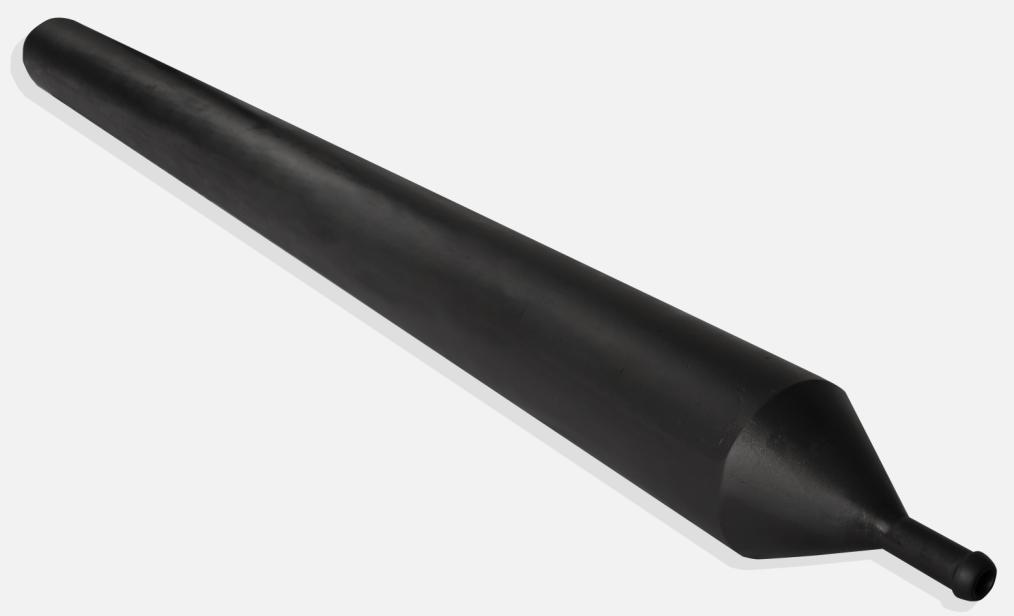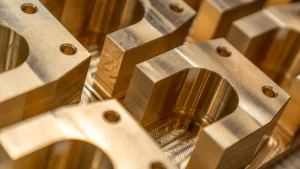Choosing the right diffusion tube can feel overwhelming, but it doesn’t have to be. Whether you’re monitoring air quality in industrial spaces or ensuring compliance with environmental regulations, the right tool makes all the difference. Products like UUNN diffusion tubes stand out for their unmatched precision, while Drager diffusion tubes simplify personal exposure monitoring with their pump-free design. For long-term air quality assessments, nitrogen oxides diffusion tubes offer exceptional sensitivity. These tools aren’t just cost-effective; they’re essential for accurate and reliable results in demanding environments.

Key Takeaways
- Diffusion tubes are essential tools for monitoring air quality, providing accurate measurements of pollutants like nitrogen dioxide (NO2) without the need for complex equipment.
- Choosing the right diffusion tube, such as UUNN for precision or Drager for personal monitoring, can significantly enhance your air quality assessments.
- Durability and material quality are crucial; select tubes that can withstand harsh industrial conditions to ensure long-term reliability and consistent results.
- Consider the sensitivity and accuracy of diffusion tubes to meet specific monitoring needs, especially in industries with strict environmental regulations.
- Budget-friendly diffusion tubes offer a cost-effective solution without sacrificing quality, making them ideal for large-scale assessments or preliminary surveys.
- Proper positioning and deployment of diffusion tubes are vital for obtaining accurate data; ensure they are placed correctly to capture pollutant levels effectively.
- Utilizing a comparison table can simplify the decision-making process, helping you choose the best diffusion tube based on cost, durability, and application suitability.
What Are Diffusion Tubes and Why Are They Important?
Definition and Function
What are diffusion tubes?
Ever wondered how industries monitor air quality without bulky equipment? That’s where diffusion tubes come in. These small, lightweight plastic tubes contain a chemical reagent that absorbs specific pollutants directly from the air. They rely on a process called molecular diffusion, where pollutant molecules naturally move from areas of high concentration to low concentration. This simple yet effective design makes them a go-to tool for measuring gases like nitrogen dioxide (NO2) in the environment.
Diffusion tubes are incredibly versatile. Municipal authorities often use them for local air quality management. They expose the tubes for four to five weeks, allowing them to gather data over time. This method provides monthly or even yearly insights into pollutant levels. Their affordability and ease of use make them accessible for both large-scale industrial applications and smaller environmental surveys.
How do they work in industrial applications?
In industrial settings, diffusion tubes play a critical role. They don’t require power or complex machinery, which makes them ideal for remote locations or facilities with limited resources. The chemical reagent inside the tube reacts with specific pollutants, creating measurable results. For example, nitrogen oxides diffusion tubes can detect NO2 concentrations at levels as low as parts per billion. This precision is essential for industries that need to comply with strict environmental regulations.
Industries often place these tubes around their perimeters to monitor air quality and ensure workplace safety. The data collected helps identify pollution hotspots, assess compliance with legal standards, and guide decisions to improve air quality. Their passive nature means they work continuously without intervention, making them a reliable and low-maintenance solution.
Importance in Industrial Applications
Role in monitoring and controlling air quality
Air quality monitoring isn’t just about meeting regulations—it’s about protecting people and the environment. Diffusion tubes provide a straightforward way to track pollutants like NO2, which can harm both human health and ecosystems. By using these tools, industries can identify problem areas and take action to reduce emissions. This proactive approach not only ensures compliance but also fosters a safer and healthier workplace.
For instance, acid gas diffusion tubes are commonly used in industrial facilities to monitor perimeter air quality. They help detect harmful gases before they reach dangerous levels. This early detection can prevent accidents, protect workers, and minimize environmental impact.
Common industries and use cases, such as chemical processing and environmental monitoring
You’ll find diffusion tubes in a variety of industries. Chemical processing plants use them to monitor emissions and maintain safe working conditions. Environmental agencies rely on them for large-scale air quality assessments. Even municipal authorities use them to track pollution trends in urban areas.
One of their standout features is their ability to cover wide areas. Unlike stationary monitors, diffusion tubes can be placed in multiple locations to capture spatial variations in pollutant levels. This makes them invaluable for surveys where air quality varies significantly across a region.
Top Diffusion Tubes for Industrial Applications
When it comes to choosing the right diffusion tube, understanding the best options available can make your decision much easier. Let’s dive into the top picks for industrial applications and see what makes them stand out.
Best Overall Diffusion Tube
UUNN Diffusion Tubes: Features and specifications
The UUNN diffusion tubes have earned their reputation as the best overall choice for industrial use. These tubes excel in precision, offering highly accurate measurements of pollutants like nitrogen dioxide (NO2). Their design ensures consistent results, even in challenging environments. Made with durable materials, they withstand harsh industrial conditions without compromising performance.
Another standout feature is their long-term reliability. UUNN diffusion tubes provide stable readings over extended periods, making them ideal for continuous air quality monitoring. They also come pre-loaded with a high-quality chemical reagent, which simplifies setup and reduces preparation time. For industries that demand both accuracy and efficiency, these tubes deliver on all fronts.
Why UUNN diffusion tubes stand out as the best overall choice
I’ve found that UUNN diffusion tubes shine because of their unmatched precision and reliability. They consistently outperform traditional Palmes-type diffusion tubes, which often struggle with measurement accuracy over long sampling periods. UUNN tubes also offer better sensitivity, detecting pollutant levels as low as parts per billion. This level of detail is crucial for industries aiming to meet strict environmental standards.
Their ease of use adds another layer of appeal. You don’t need specialized training to deploy them, and their passive design eliminates the need for power or pumps. Whether you’re monitoring air quality at a chemical plant or conducting an environmental survey, UUNN diffusion tubes provide a hassle-free experience.
Best for Specific Applications
Drager Diffusion Tubes for personal exposure monitoring
If you’re looking for a solution tailored to personal exposure monitoring, Drager diffusion tubes are the way to go. These tubes are designed to measure time-weighted average (TWA) concentrations over short periods, such as an eight-hour work shift. They use a colorimetric reaction to indicate pollutant levels, which makes interpreting results straightforward.
What sets Drager tubes apart is their pump-free design. Unlike other diffusion tubes that require additional equipment, these tubes work passively. This simplicity makes them perfect for workers who need to monitor their exposure to harmful gases like ammonia or sulfur dioxide. They’re lightweight, portable, and easy to use, making them a practical choice for on-the-go applications.
Nitrogen Oxides Diffusion Tubes for long-term air quality assessments
For long-term air quality monitoring, nitrogen oxides diffusion tubes are a top contender. These tubes specialize in detecting NO2 levels over extended periods, providing detailed insights into air quality trends. Their detection limits range from low parts per billion to parts per million, ensuring precise measurements even in areas with minimal pollution.
Industries often use these tubes for perimeter monitoring, placing them in multiple locations to capture a comprehensive picture of air quality. Their affordability allows for widespread deployment, making them a cost-effective solution for large-scale assessments. If your goal is to track air quality over weeks or months, nitrogen oxides diffusion tubes won’t disappoint.
Best Budget-Friendly Option
Features and specifications of cost-effective diffusion tubes
Not every project has the budget for premium options, but that doesn’t mean you have to compromise on quality. Cost-effective diffusion tubes offer a balance between affordability and performance. These tubes typically feature a simple design with a reliable chemical reagent, ensuring accurate pollutant measurements without breaking the bank.
They’re also versatile, suitable for both industrial and environmental applications. Despite their lower price point, these tubes maintain a high level of durability, making them a smart choice for projects with tight budgets.
How budget-friendly options balance affordability and quality
I’ve seen how budget-friendly diffusion tubes can still deliver excellent results. They may lack some of the advanced features found in premium models, but they get the job done. Their affordability allows industries to deploy them in larger numbers, covering more ground and gathering more data. This makes them especially useful for regional air quality surveys or preliminary assessments.
By choosing cost-effective diffusion tubes, you can achieve reliable monitoring without overspending. They prove that you don’t need to sacrifice quality to stay within budget.
Key Factors to Consider When Choosing a Diffusion Tube
When selecting the right diffusion tube, understanding what to prioritize can save time and ensure better results. Let’s break down the key factors that matter most.
Material and Durability
Importance of material quality in industrial settings
The material of a diffusion tube plays a huge role in its performance. In industrial environments, tubes often face harsh conditions like extreme temperatures, humidity, or exposure to chemicals. A high-quality material ensures the tube remains functional despite these challenges. For example, I’ve seen how durable plastic tubes with chemical-resistant coatings perform better in factories or outdoor monitoring stations. They don’t degrade easily, which means they provide consistent results over time.
“Municipal authorities in many countries use diffusion tubes as an essential component of local air quality management (LAQM) processes,” according to experts. This highlights the importance of reliable materials that can withstand long-term exposure.
How durability impacts long-term performance
Durability directly affects how long a diffusion tube can deliver accurate readings. A sturdy tube reduces the risk of cracks, leaks, or contamination, which could compromise the data. I’ve noticed that durable tubes also save money in the long run. You won’t need to replace them as often, and they maintain their effectiveness even in demanding environments. For industries monitoring air quality over months or years, durability isn’t just a bonus—it’s a necessity.
Accuracy and Sensitivity
Why precision matters in industrial applications
Precision is everything when it comes to air quality monitoring. A diffusion tube must detect even the smallest changes in pollutant levels to provide actionable insights. For instance, industries monitoring nitrogen dioxide (NO2) need tubes that can measure concentrations as low as parts per billion. Without this level of accuracy, it’s impossible to meet strict environmental regulations or identify pollution hotspots.
I’ve found that precise measurements also help industries make informed decisions. Whether it’s adjusting emission controls or improving workplace safety, accurate data ensures the right steps are taken.
How to evaluate sensitivity for specific needs
Not all diffusion tubes are created equal. Some are more sensitive to specific pollutants, making them better suited for certain applications. For example, nitrogen oxides diffusion tubes excel at long-term air quality assessments, while Drager diffusion tubes are ideal for personal exposure monitoring. When choosing a tube, I always recommend checking its detection limits and the pollutants it targets. This ensures the tube aligns with your specific monitoring goals.
Compatibility and Ease of Use
Ensuring compatibility with existing systems
Compatibility is another critical factor. A diffusion tube should integrate seamlessly with your existing monitoring setup. For instance, if you’re using a specific type of holder or mounting system, the tube must fit without requiring modifications. I’ve seen how mismatched equipment can lead to delays or inaccurate readings. Always verify that the tube works with your current tools before making a purchase.
User-friendly features to look for
Ease of use can’t be overlooked. A good diffusion tube should be simple to deploy and require minimal maintenance. Features like pre-loaded chemical reagents or pump-free designs make a big difference. For example, Drager diffusion tubes stand out because they don’t need additional equipment, which simplifies the process. I’ve noticed that user-friendly tubes save time and reduce the chances of errors during setup or data collection.
Comparison Table
Side-by-Side Comparison of Top Diffusion Tubes
Key metrics such as cost, durability, accuracy, and application suitability.
When it comes to choosing the right diffusion tube, having a clear comparison can make all the difference. I’ve put together a table that highlights the key metrics—cost, durability, accuracy, and application suitability—for the top diffusion tubes discussed earlier. This quick reference will help you decide which one fits your needs best.
| Diffusion Tube | Cost | Durability | Accuracy | Best For |
|---|---|---|---|---|
| UUNN Diffusion Tubes | $$$ | High | Exceptional (parts per billion) | Long-term industrial air quality monitoring |
| Drager Diffusion Tubes | $$ | Moderate | Reliable for short-term use | Personal exposure monitoring |
| Nitrogen Oxides Tubes | $$ | High | Precise (low ppb to ppm) | Perimeter monitoring and environmental surveys |
| Budget-Friendly Tubes | $ | Moderate | Good for general use | Cost-effective large-scale assessments |
Quick reference for decision-making.
Here’s a breakdown of what makes each option stand out:
-
UUNN Diffusion Tubes: These are the go-to choice if you need precision and durability. They excel in industrial settings where accuracy is critical. Their ability to measure pollutants at extremely low concentrations makes them ideal for meeting strict environmental standards.
-
Drager Diffusion Tubes: If you’re focused on personal exposure monitoring, these tubes are a practical choice. Their pump-free design simplifies usage, and they’re portable enough for workers to carry during shifts. They’re perfect for short-term applications.
-
Nitrogen Oxides Diffusion Tubes: These tubes shine in long-term air quality assessments. They provide detailed insights into NO2 levels over weeks or months. Their affordability allows for widespread deployment, making them a favorite for perimeter monitoring.
-
Budget-Friendly Tubes: Tight budget? These tubes balance cost and performance. While they may not have the advanced features of premium options, they still deliver reliable results. They’re great for covering large areas or conducting preliminary surveys.
“Colorimetric, passive diffusion tubes can reasonably measure low concentrations of airborne contaminants over a week,” which makes them a cost-effective solution for identifying pollution trends. However, keep in mind that they may not match the precision of real-time instruments.
This table simplifies the decision-making process. Whether you prioritize cost, accuracy, or durability, you’ll find an option that aligns with your goals.
Choosing the right diffusion tube doesn’t have to be complicated. I’ve highlighted the top options, like UUNN diffusion tubes for precision, Drager tubes for personal monitoring, and nitrogen oxides tubes for long-term assessments. Each stands out for its unique strengths, whether it’s accuracy, ease of use, or affordability. Always match your choice to your specific industrial needs. Use the comparison table and key factors discussed to guide your decision. With the right diffusion tube, you’ll ensure reliable air quality monitoring and compliance with regulations.
FAQ
What are diffusion tubes used for?
Diffusion tubes play a key role in monitoring air quality. They help measure nitrogen dioxide (NO2) levels in the air, which is crucial for understanding pollution trends. Many local authorities rely on them to assess air quality and ensure compliance with environmental standards. These tubes are also widely used in industrial settings to monitor emissions and maintain safe working conditions.
How do diffusion tubes work?
Diffusion tubes operate using a simple yet effective process. They have one capped end and one uncapped end. Gas molecules naturally move from areas of high concentration to low concentration. The capped end contains grids coated with a chemical reagent, such as triethanolamine (TEA), which absorbs NO2 directly from the air. This passive design eliminates the need for power or complex equipment.
How are diffusion tubes positioned?
Positioning diffusion tubes correctly is essential for accurate results. They are placed vertically, with the uncapped end exposed to the air. This setup ensures that gas molecules can diffuse into the tube efficiently. Industries and environmental agencies often place these tubes in multiple locations to capture a comprehensive picture of air quality.
What is the purpose of using diffusion tubes in air quality monitoring?
The primary goal of using diffusion tubes is to track ambient NO2 levels over time. Local authorities use them to review and assess air quality in specific areas. By analyzing the data collected, they can identify pollution hotspots and implement measures to improve air quality. This proactive approach helps protect both public health and the environment.
How are diffusion tubes used in long-term air quality monitoring?
Diffusion tubes are ideal for long-term monitoring because they provide average pollutant concentrations over weeks or months. For example, in Oxford, air quality levels are monitored using diffusion tubes placed in 137 locations. This method allows authorities to calculate yearly averages and gain valuable insights into pollution trends.
What are the characteristics of colorimetric, passive diffusion tubes?
Colorimetric, passive diffusion tubes are known for their simplicity and reliability. They can measure low concentrations of airborne contaminants during exposure periods of one week. This makes them a cost-effective solution for identifying pollution trends in various environments. While they may not match the precision of real-time instruments, they still provide valuable data under many circumstances.
What is the composition of a diffusion tube?
A diffusion tube consists of a small plastic tube containing a chemical reagent. This reagent reacts with specific pollutants, such as NO2, to provide measurable results. The lightweight and compact design of these tubes makes them easy to deploy in both industrial and environmental settings.
Can diffusion tubes be used in industrial applications?
Absolutely! Diffusion tubes are widely used in industries to monitor air quality and ensure workplace safety. They are particularly useful for perimeter monitoring, where they help detect harmful gases before they reach dangerous levels. Their passive nature and durability make them a reliable choice for industrial environments.
How accurate are diffusion tubes?
Diffusion tubes offer reasonable accuracy for measuring average pollutant concentrations. They are especially effective for long-term monitoring, where precision at low concentrations is critical. For instance, nitrogen oxides diffusion tubes can detect NO2 levels as low as parts per billion, making them suitable for industries with strict environmental regulations.
Why are diffusion tubes considered cost-effective?
Diffusion tubes are an affordable option for air quality monitoring. Their simple design and passive operation eliminate the need for expensive equipment or power sources. This affordability allows for widespread deployment, making them a practical choice for large-scale surveys or projects with tight budgets.
For more product details, please contact steven@china-vet.com Or website: www.vet-china.com.






